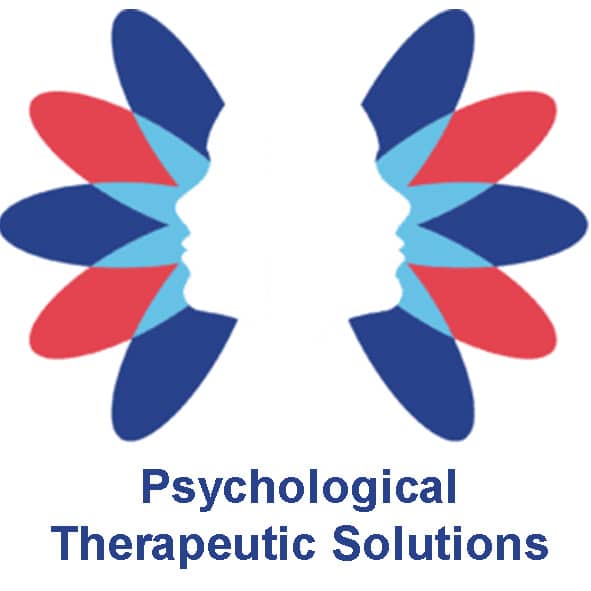EMDR THERAPY – What is it and how is it done!
Eye Movement Desensitisation and Reprocessing (EMDR) is a therapeutic approach designed to help individuals process distressing memories and alleviate the associated emotional and psychological symptoms.
The eight phases of EMDR therapy, as outlined by both EMDR UK and EMDRIA (EMDR International Association), are as follows:
1. History-Taking and Treatment Planning:
- This phase generally takes 1-2 sessions at the beginning of therapy. The therapist gathers information about the client’s history, presenting problems, and develops a treatment plan. This phase includes establishing trust and explaining the EMDR process. However, as new information emerges the therapist may return to history taking throughout the therapy.
- With this information, the therapist will develop a treatment plan that defines the specific targets on which to use EMDR:
- the event(s) from the past that created the problem.
- the present situations that cause distress.
- the key skills or behaviors the client needs to learn for his future well-being.
2. Preparation:
- For most clients, this phase will take between 1-4 sessions. One of the primary goals of the preparation phase is to establish a relationship of trust between the client and the therapist. The therapist helps the client understand the EMDR process and teaches them various stress-reduction techniques. Another goal is to ensure the client has coping skills to manage any emotional distress that may arise during the therapy sessions. “EMDR therapy is a great deal more than just eye movements, and the therapist needs to know when to employ any of the needed procedures to keep the processing going. Learning these tools is an important aid for anyone. The happiest people on the planet have ways of relaxing themselves and decompressing from life’s inevitable and often unsuspected stress. One goal of EMDR therapy is to ensure the client can take care of himself or herself” EMDRIA.
3. Assessment:
- The therapist will support the client and prompt them to access each target in a controlled and standardised way to be effectively processed. Once the client identifies target memories or traumatic events that will be the focus of the EMDR processing. This phase involves determining the specific negative beliefs associated with these memories. Common negative cognitions include statements such as “I am helpless,” “I am worthless,” “I am unlovable,” “I am dirty,” “I am bad,” etc.
- The client then picks a positive cognition that they would rather believe incorporating an internal sense of control, such as “I am worthwhile/lovable/a good person/in control” or “I can succeed.” Sometimes, when the primary emotion is fear, such as in the aftermath of a natural disaster, the negative cognition can be, “I am in danger,” and the positive cognition can be, “I am safe now.” Positive cognitions should reflect what is appropriate in the present.
- The therapist will then ask the person to estimate how true a positive belief feels using the 1-to-7 Validity of Cognition (VOC) scale. “1” equals “completely false,” and ” 7″ equals “completely true.” It is essential to give a score that reflects how the person “feels,” not ” thinks.” We may logically “know” something is wrong, but we are most driven by how it ” feels.”
- Also, during the Assessment Phase, the person identifies the negative emotions (fear, anger) and physical sensations (tightness in the stomach, cold hands) he/she/they associate with the target. The client also rates the negative belief but uses a different scale called the Subjective Units of Disturbance (SUD) scale. This scale rates the feeling from 0 (no disturbance) to 10 (worst) and assesses the client’s feelings.
- The goal of EMDR treatment, in the following phases, is for SUD scores of disturbances to decrease while the VOC scores of positive belief increase.
4. Desensitisation:
- This is the core phase of EMDR, where the client focuses on the identified target memory while simultaneously engaging in bilateral stimulation (typically guided by the therapist’s finger movements or other methods). This helps the client process the memory and associated negative beliefs, reducing their emotional charge as measured by the SUDs rating. This phase deals with the person’s responses (including other memories, insights, and associations that may arise) as the targeted event changes and its disturbing elements are resolved. This phase gives the opportunity to identify and resolve similar events that may have occurred and are associated with the target. That way, a client can surpass his or her initial goals and heal beyond expectations.
- During desensitisation, the therapist leads the person in sets of eye movements, sounds, or taps with appropriate shifts and changes of focus until his or her SUD-scale levels are reduced to zero (or 1 or 2 if this is more appropriate). Starting with the main target, the different associations to the memory are followed. For instance, a person may start with a horrific event and soon have other associations to it. The therapist will guide the client to a complete resolution of the target.
5. Installation:
- Positive beliefs are identified, and the therapist helps the client install these positive beliefs to replace the negative ones associated with the target memory. Within the phase the goal is to strengthen the positive cognition related to the target image. How deeply the person believes that positive cognition is then measured using the Validity of Cognition (VOC) scale. The goal is for the person to accept the full truth of their positive self-statement at a level of 7 (completely true).
- Fortunately, just as EMDR cannot make anyone shed appropriate negative feelings, it cannot make the person believe anything positive that is not appropriate either. So if the person is aware that they need to learn some new skill, such as self-defense training, to be truly in control of the situation, the validity of that positive belief will rise only to the corresponding level, such as a 5 or 6 on the VOC scale.
6. Body Scan:
- The therapist and client check for any residual physical tension or discomfort related to the targeted memory. If there are remaining sensations, additional processing may be done. “Evaluations of thousands of EMDR sessions indicate that there is a physical response to unresolved thoughts. This finding has been supported by independent studies of memory indicating that when a person is negatively affected by trauma, information about the traumatic event is stored in body memory (motoric memory), rather than narrative memory and retains the negative emotions and physical sensations of the original event. However, when that information is processed, it can then move to narrative (or verbalisable) memory, and the body sensations and negative feelings associated with it disappear.
- Therefore, an EMDR session is not considered successful until the client can bring up the original target without feeling any tension in the body. Positive self-beliefs are important, but they have to be believed on more than just an intellectual level.” EMDRIA.
7. Closure:
- Closure ensures that the person leaves feeling better at the end of each session than at the beginning. The therapist ensures that the client is stable and able to manage any residual distress. Coping strategies are reinforced. The client is also briefed on what to expect between sessions (some processing may continue, some new material may arise), how to use a journal to record these experiences, and what calming techniques could be used to self-soothe in the client’s life outside of the therapy session and the client is encouraged to engage in self-care between sessions.
8. Re-evaluation:
- In subsequent sessions, the therapist and client review progress and address any remaining issues. Additional memories or aspects may be targeted if necessary.
The Role of Past, Present, and Future Templates:
EMDR therapy is not complete until attention has been brought to the past memories contributing to the problem, the disturbing present situations, and what skills the client may need for the future.
It’s important to note that while EMDR is a widely used therapeutic approach, its effectiveness may vary from person to person. It is recommended to undergo EMDR therapy under the guidance of a trained mental health professional.
For further guidance and support, consider reaching out to Psychological Therapeutic Solutions. Contact us to explore personalised options for your healing process.
















